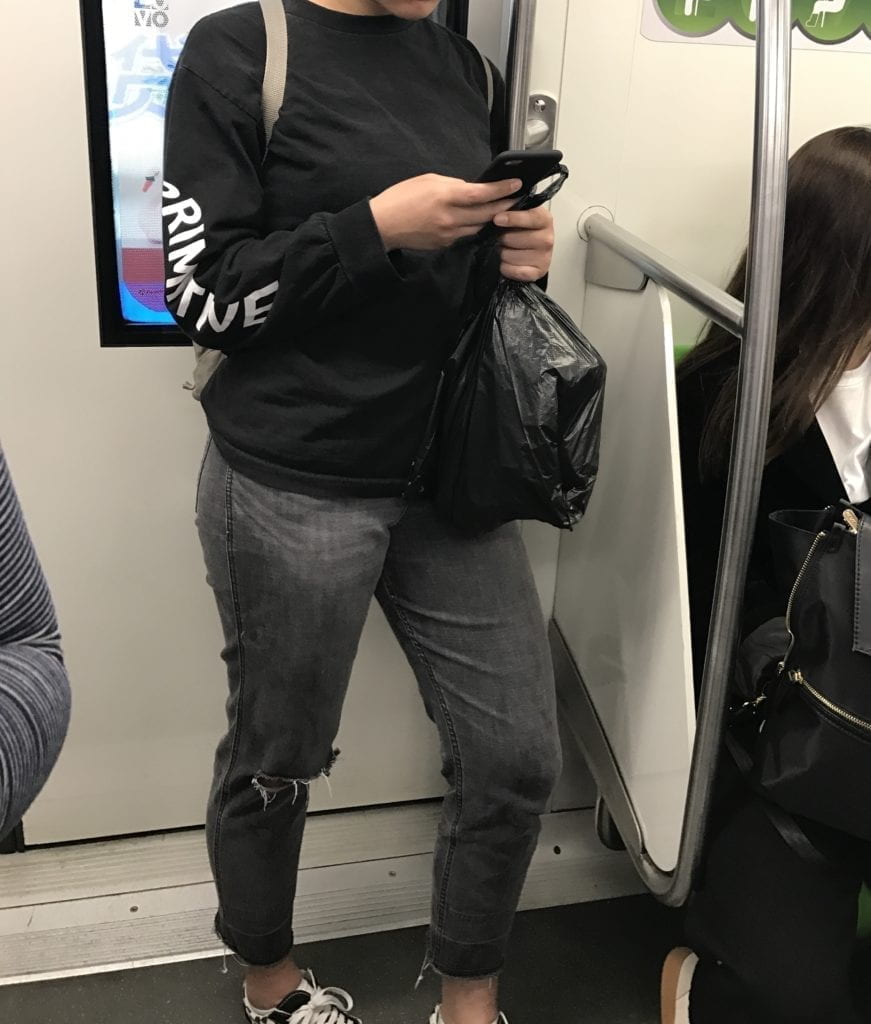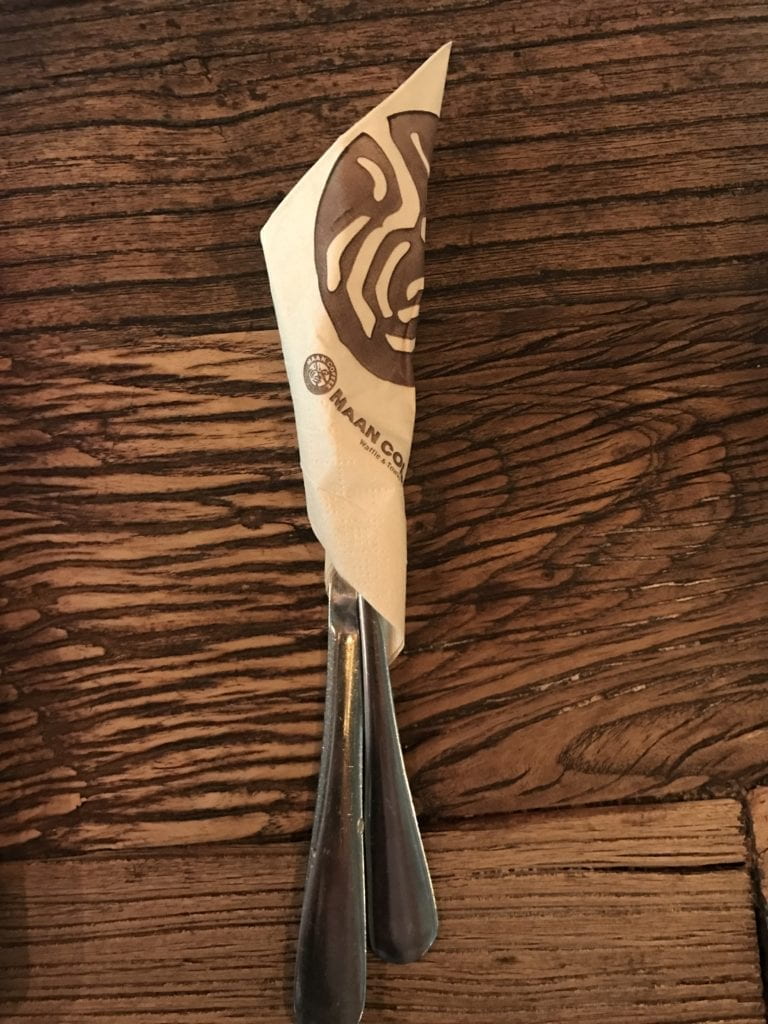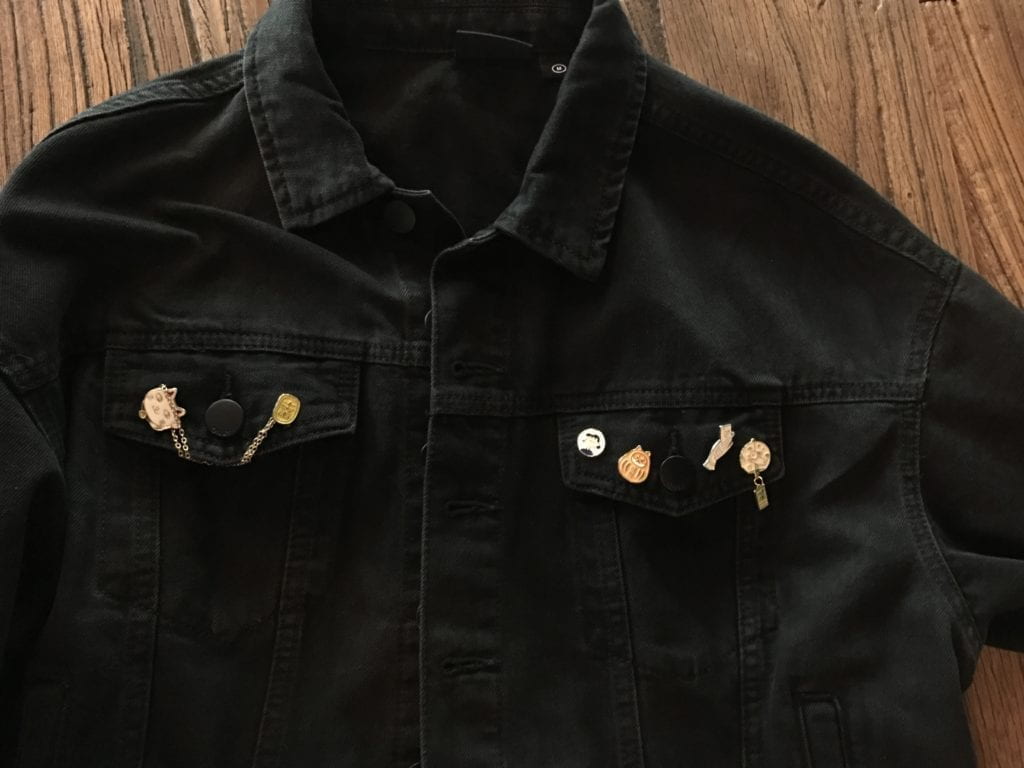Trying to pick out thoughtless acts in my daily life was a bit challenging, because these actions are so ingrained and automatic that I never recognize them as anything special. However, after thinking about it more, I came to realize that thoughtless acts are everywhere around me. We take advantage of particular designs all around us to serve different purposes and guide us in our daily lives. These thoughtless acts allow us to quickly and effortlessly take shortcuts to make life easier.
As a frequent metro rider, I’ve come to expect filled seats and am therefore always trying to find the perfect place to situate myself on the train so that I am out of the way of people and able to stand with stability. I’ve found that this place is in the corner of the door and seat railing on the opposite side of the opening doors. Leaning against the corner allows me to avoid having to use my hands to stabilize myself, giving me free access to use my phone with both hands. I’m also out of the way of other people getting on and off, which lets me to relax until I reach my stop. This spot is so ideal that I make a beeline towards it whenever I can without thinking.

However, this only works if only one side of the doors are opened throughout the trip. If both sides are used at unpredictable times, this defeats the purpose of being able to relax for the duration of the ride. Too many times I have been leaning on the doors, only for them to unexpectedly open, forcing me to stumble around the crowded train for a new spot to stand. To fix this problem, more leaning rails can be installed on the train for easier standing space away from the doors, so that more standing passengers can have an uninterrupted metro ride.
Another thoughtless act that I have been doing my whole life is wrapping a napkin around my utensils when packaging them in a bag. This serves to keep the utensils clean from the rest of the bag’s contents while providing a napkin for later use.

This is a great way for eating on the go, since it is so easy to pack and use. However, napkins tend to be a bit flimsy, so it sometimes comes off the utensils. A sturdy yet simple new napkin fold could be designed so that the napkin stays, without the need for any extra external securer. This eliminates additional waste and maintains the simplicity of the napkin’s function.
The last thoughtless act I observed was on my friend’s jacket. She had put pins only on the chest pockets, staying within the boundaries of the flap. This reminded me of the example of people walking along with lines on the ground without realizing. My friend placed her pins on the pockets because they acted as a pre-existing boundary for her to place them in an orderly way. In addition to the chest pockets, the seams and collar of the jacket could also act as a guideline for her to place her pins.
